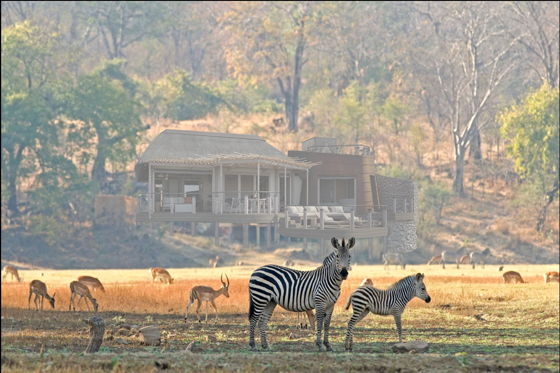For as long as I can remember, I’ve been passionate about the great outdoors. Growing up in a small rural town outside Seville, Spain, I spent my free time hiking, biking, and riding horses through the countryside. Fast forward to present day, and I’m fortunate to be working in an industry that allows me to do what I love the most: blazing new trails. Literally.
Contributed by Jesús Parrilla, principal, Luxury Frontiers, Larkspur, California
The through line of my career has been crafting successful outdoor experiences and developing new tourism destinations. I’ve been involved in developing 2,000 miles of exploration routes and trails for luxury hospitality companies. I believe in the richness of authentic travel experiences as the source of joy, connection and our desire to conserve nature.
It’s work that is as thrilling as it is gratifying. At the same time, it’s a job that comes with weighty responsibilities: do harm to an environment and your risk causing irreversible and incalculable damage. It’s a duty I take incredibly seriously, both as an environmental steward and a fierce lover of the natural world.

One of the most troubling misconceptions of designing outdoor experiences is the one-size-fits-all approach that some hospitality companies take when developing their outdoor concepts.
Nature is more than an Instagrammable backdrop
I often see brands try to lure visitors by creating Instagrammable backdrops or reproducing experiences found elsewhere. Not only is this disingenuous and inauthentic, it’s also potentially destructive to natural habitats and local communities.
Which brings me to experiential design. This term signifies a practice whereby a destination’s natural, cultural, and historical environment is leveraged to develop experiences that are meaningful, well-rounded, and contextually relevant.
Experiential design and outdoor activities exist to compliment architectural and interior design work. Nothing is designed without first factoring in the experiences and vice versa – the outdoor activities are an extension of the design, meaning the guest experience continues when you leave the room.
The experiential design process begins from the ground up. When arriving at a new destination, take inventory of the flora and the fauna, analyze the movement of water, study the rocks and the soil, as well as investigate the cultural and social aspect of the place. Ask yourself: Who lives here? What does this land mean to those who inhabit it? What does it represent from a historical, spiritual, anthropological, or even archaeological perspective? And how will this place sustain future generations?
The natural world profoundly affects physical design
The answers to these questions also affect all levels of physical design—from building materials and energy systems to water treatment technologies. From an activity standpoint, this rigorous investigation of the land allows us precisely map the destination while also planning experiences for various skills sets and physical capabilities. The incline of a hill, the rising and falling of the ocean tides, and the species of plants that populate an area are all factors that will shape risk assessments, evacuation and contingency plans, guiding requirements, gear and equipment selection, among other considerations.
As a believer in the mystical, transformative properties of nature, I’m also interested in outdoor experiences as means to open up and stimulate travelers’ senses. The most transformative trips I’ve ever gone on have taken me to the world’s wildest and most remote corners—from Colombia’s Sierra Nevada de Santa Marta mountain range to the wadis of Saudi Arabia. And while I’m aware that not all destinations can offer the same degree of “escape,” I’m an advocate of experiences that demand total and active participation from travelers – allowing them to perceive new realities and adapt to foreign situations without misrepresentation or filters.
The Triple Bottom Line
From a destination standpoint, my goal is to infuse a hospitality concept or experience with a sense of place while also protecting the environment, implementing sustainable business practices, and supporting local communities and businesses so they stand the test of time and generate prosperity and meaningful employment opportunities.
Ultimately, I can boil it down to what I call a “5 P’s” model. Inspired by the “Triple Bottom Line” accounting framework conceived by John Elkington, one of the founders of the global sustainability movement, the model encompasses the tenets of people, planet, place, prosperity, and perpetuity.
“People” is about respecting local communities by demanding parity and fair remuneration and trade and preserving culture, traditions, and identities. “Planet” concerns caring for natural resources, regenerating vital resources, and championing low-impact operations. “Place” has to do with showing utmost respect for a locale; “prosperity” is about ensuring economic and social advancement so that no stakeholder is left behind; and “perpetuity” deals with resisting fads or trends to safeguard the survival of an environment/community.
For me, the art of crafting meaningful hospitality concepts and outdoor experiences can be rigorous and at times, even painstaking. But it’s work that, like travel on the whole, is about connecting to something larger than ourselves. Not only does it lend richness and authenticity to the travel experience but ultimately, also, to travelers’ lives.
